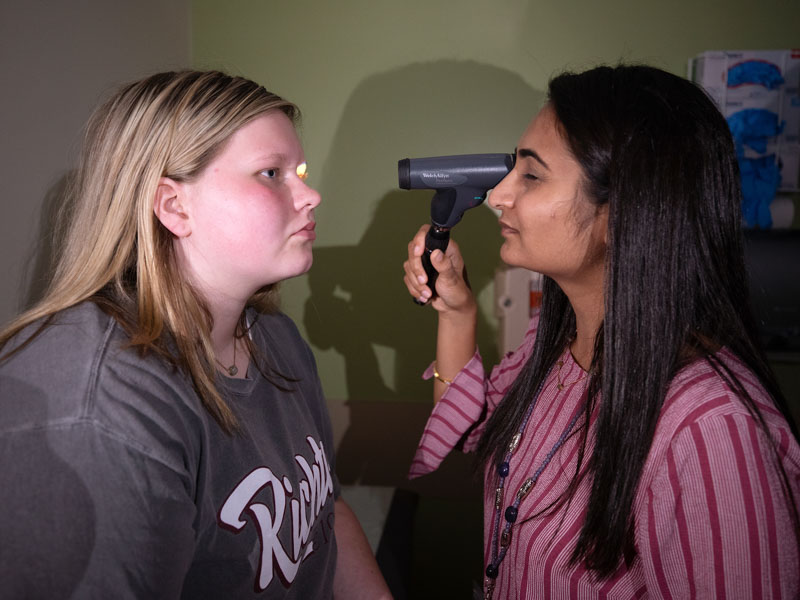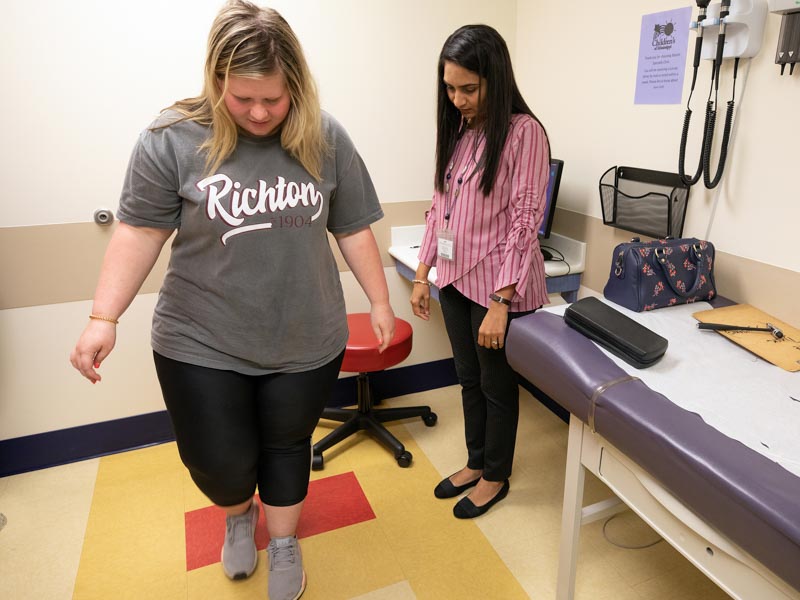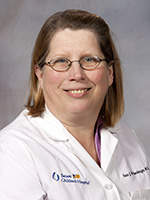State’s only pediatric headache specialist eases young patients' pain

A crayon drawing of a dagger pointed at a child’s temple.
That’s how one pediatric patient communicated the pain of chronic headaches in research by Children’s of Mississippi pediatric neurologists including Dr. Riddhiben Patel, the state’s only certified headache medicine specialist in pediatrics.
Dr. Patel provides care for pediatric headache patients on Wednesday and Thursday at the Children’s of Mississippi Specialty Clinic at 421 S. Stadium Drive in Jackson.
“Their pain can be severe and debilitating,” Patel said of her young patients. “It can interfere with academics, activities and family life.”
The pain is paired with a lack of awareness from adults. According to the National Headache Foundation, 30 to 50 percent of people younger than 18 have recurrent headaches. Of those, about 15 percent have tension-type headaches while the remainder cope with migraines.
“Headaches are more common than asthma and seizures,” said Patel, “but they are not taken seriously. Our schools need to be aware of the fact that children can suffer severe headaches.”

The Dykes family of Richton found out just how much headaches can disrupt a child’s life when daughter Kalli began to suffer migraines in her early teens. Missed school and dropping out of her favorite sport, softball, added to the headache pain.
“She was really sick,” said her mother, Holly. “When she was having a migraine, she really couldn’t function.”
Migraine symptoms include throbbing pain often on one side of the head, but particularly in children, it can be on both sides of the head. Light and noise sensitivity, fatigue, nausea and vomiting, mood changes and vision changes, or an aura, are other migraine symptoms.
For the past year, Kalli has received Botox injections over her forehead, the back of her head and her shoulders at the Children’s of Mississippi headache clinic at UMMC’s pediatric specialty clinic at 421 S. Stadium Drive in Jackson.
“These have made a big difference,” Kalli said. A rising junior at Richton High, Kalli now enjoys walking, swimming and a life with fewer headaches.
Patel also offers nerve blocks, which, for some patients, can relieve chronic pain from headaches that stem from the neck or base of the skull more effectively than oral medication.
The medical journey for children with headaches should begin with their primary care provider, Patel said.

“The physician would have to look at the child’s medical history and do a physical, and then could need to sort out the symptoms to find the cause of the headaches,” said Dr. Sara Weisenberger, associate professor of pediatrics and medical director of Children’s of Mississippi’s Complex Care Clinic at the Jackson Medical Mall.
Repeated headaches, Weisenberger said, might prompt a referral to a pediatric neurologist, an allergist or an ophthalmologist.
Thankfully, the vast majority of children’s headaches are not serious, but some headaches and related symptoms mean emergency care should be sought.
The American Academy of Pediatrics recommends seeking care right away if your child has sudden, severe head pain coupled with confusion, double vision, sleepiness or projectile vomiting. Headaches with stiffness and pain in the neck and fever are also a cause for an emergency room visit.
A visit to a pediatrician is called for when headaches are a daily occurrence or return with greater pain. Headaches with vomiting or nausea, light and sound sensitivity and numbness, and pain following a head injury that doesn’t go away after a week also call for medical attention, according to the AAP.
Patel said secondary causes of headaches are investigated and ruled out during the referral process.
A form is given to families to complete before the first visit, detailing the patient’s socialization, family medical history, extracurricular activities, diet and more.
After care through the headache clinic begins, additional questions gauge whether pain is becoming less severe and less frequent.
Communicating with younger patients, said Patel, can be a challenge. The Children’s of Mississippi research showed that children can often convey concepts such as light sensitivity, nausea and details about their headache pain through drawing pictures.
“They may not have the vocabulary to describe their headaches yet,” said Patel, “but children’s drawings can give health care providers insight into what they are feeling. Drawing headaches help us make a more accurate diagnosis.”


